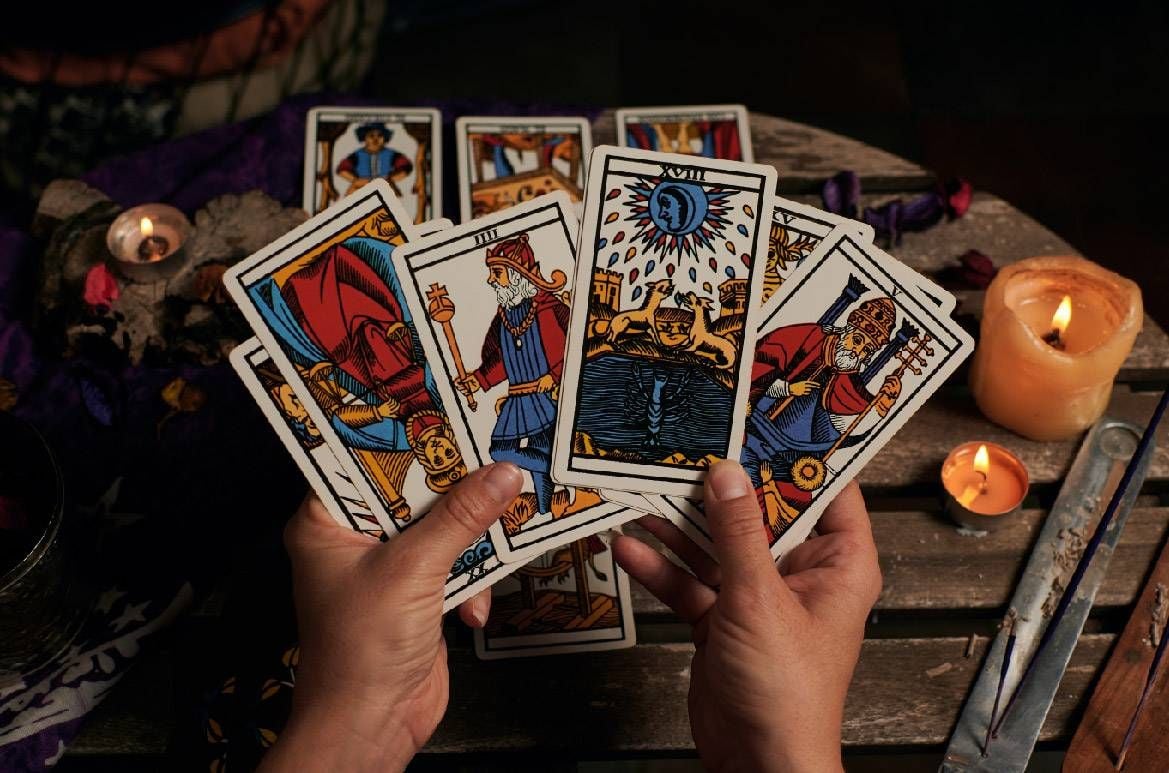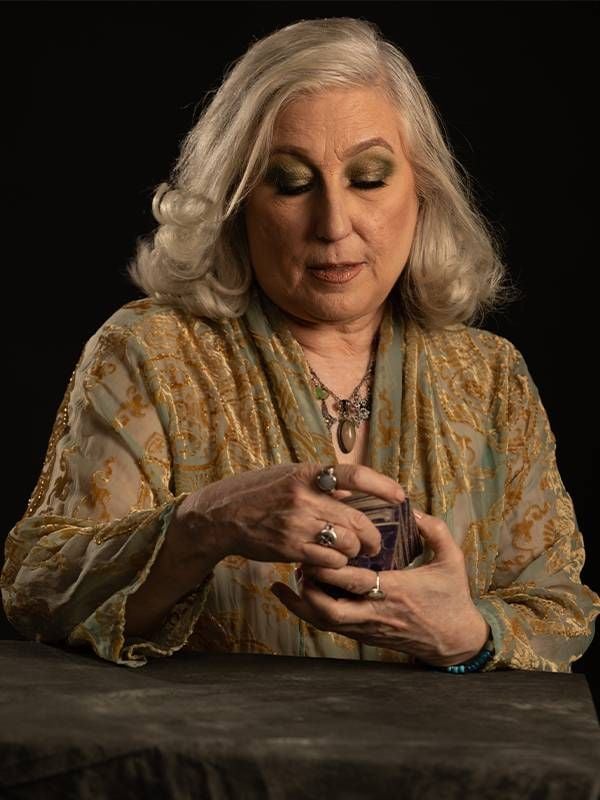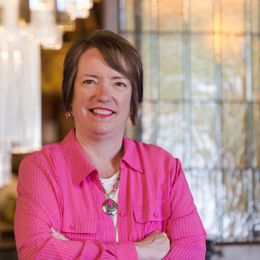What Do the Tarot Cards Say?
Drawing just one card from the deck each day may lead you to see things differently
People who have heard of tarot cards but haven't spent time investigating them can have some interesting views about tarot. Images come to mind of traveling county fairs with mysterious women with Eastern European accents in elaborate garb holding forth in a dark tent, ominously turning over cards with frightening names (and in some cases, images) of Death or the Devil, cards that could predict death and disaster and loss of fortune. For some people, those images alone qualify tarot cards to be tools of the occult, while others roll their eyes and dismiss it as New Age claptrap.

But the role of tarot in today's world has a long and storied history (predating New Age belief systems by centuries). From its roots as a simple Italian card game, it's become everything from a hobby to a career to the theme of a Dior fashion show to a psychological tool of daily life for many people.
What tarot cards are, and how they work for different people — including people later in life — might surprise you.
What Are Tarot Cards?
Tarot has been around in various versions for centuries. Today, what's widely known as the standard and model for modern tarot decks is the Rider-Waite deck, first published in 1909. Rider-Waite has 78 cards, divided into Major and Minor Arcana. The Major Arcana has 22 cards, each representing a different archetype (The Fool, Wheel of Fortune, Justice, The Emperor, Judgement). The remaining deck is the Minor Arcana and is divided into four suits: Wands, Swords, Cups and Pentacles. Each suit represents different elements and qualities:
"The biggest misconception is that tarot is only used for prediction."
- Swords: Air, east, mental and communicative abilities
- Wands: Fire, south, creativity
- Cups: Water, west, emotion and feeling
- Pentacles: Earth, north, sensations, boundaries and form
Every card has its own image. Those images are what can evoke new trains of thought for readers. Many other decks have been created since Rider-Waite was published. Some focus on the 78-card model, while others, often called oracle decks, start from scratch and have different numbers of cards created around a specific theme.
How Do Tarot Cards Work?
People can read tarot cards for themselves or work with an experienced tarot reader. Beginning by focusing on a question is a good idea, even something simple like "What will this week be like?" Then draw a single card and see what it might tell you.
Nancy Antenucci is a St. Paul, Minnesota-based tarot reader in her sixties, founder of the Twin Cities Tarot Collective and the author of two books, "Psychic Tarot" and "Tarot Rituals." She sees tarot cards as being a language of imagery.

"Sonia Choquette said that we should call intuition 'pattern recognition,'" Antenucci says. "I totally agree with that. When you're seeing the cards, all those pictures together, it opens up different patterns. What you're doing is recognizing the patterns of something."
While decks usually come with guidebooks to help users understand the potential meanings of each card, Antenucci encourages people to go with their instincts when they pull specific cards. "Every picture is going to strike every person differently, so there's a lot that can happen across a whole spectrum of personalities," she says.
Imagine a deck focused on weather conditions across the four seasons. One person might pull a snowstorm card and be delighted — they love winter and snowstorms. But someone who hates winter is going to have a decidedly different visceral reaction. Neither is wrong; each reflects the person drawing the card.
Tarot Card Misconceptions
"The biggest misconception is that tarot is only used for prediction," Antenucci says. "It's also used for brainstorming, or storytelling, or writing or prompts."
She's also clear on what she doesn't think tarot is. "Another misconception is that it's satanic or dark or against your religion," she notes. "You don't have to believe in anything to develop your intuitive muscles with tarot."
Then what does she see tarot as being? "I see this as the creative unknown, speaking to us. People think the power is in the card, and no, the power is in the [tarot] reader's ability to get out of the way and hold a very different space for their client and to listen well," Antenucci explains. "Readers don't know more about your life than you do. [They'll] just name it in a different way, which is helpful to get a different insight. I tell clients all the time, 'I'm not gonna say anything to you that you don't already know. I'm saying it from a very different angle so that might rattle and roll some things.'"
Using Tarot Cards Later in Life
Beatrix Raven, an artist from Shoreview, Minnesota, worked with tarot for years, but it wasn't until she was in her 50s that she began exploring it more deeply. "I didn't realize initially that it was my second calling," she says. "It took me a while to come to that, but it is." She's working with Antenucci as her mentor and has begun occasionally reading for others, besides her own daily readings.
"I feel as I've entered into my fifties and menopause that I'm much more tending to be thoughtful and contemplative about my own experience with things"
She sees the value of having a regular tarot practice in that the cards can help people see things differently. "I teach drawing as an artist, and one of the things that happens all the time, particularly with newer students, is they'll call me over because they're having a problem," she says. "They say, 'I can't get this work right over here.' I look at their work and say, 'That may be a problem, but your bigger problem is over here on this side.'"
Tarot can act as that experienced art teacher, using the images on the cards to cause intuitive flashes within one's own mind. Raven keeps tarot decks at her art studio and consults them when she's stuck in a particular aspect of her work.
Kristin Boldon, a recent Hamline University MFA graduate in Minneapolis, came to tarot in her 50s when friends gave her a Rider-Waite deck. Initially she carefully studied the accompanying guidebook and bought some additional books to help her interpret the cards, but reading Antenucci's "Psychic Tarot" changed her approach.
"I don't really feel like I started learning myself until I read it," she says. "To spend time with a deck and not consult books is antithetical to my nature as a student. My first question is always, 'What book can I research for this?'"
But she found that relying on her own instincts provides deeper readings. "I feel as I've entered into my fifties and menopause that I'm much more tending to be thoughtful and contemplative about my own experience with things and not necessarily trust someone else," she says. "I like to consult my own experience and responses first, look at all the possibilities and potentialities." It changed her daily routine, which now starts with a reading each morning.
Tarot is ancient, but has evolved with time, and people are discovering new uses for it. It's easy to start: One card a day, just to see how you respond.


